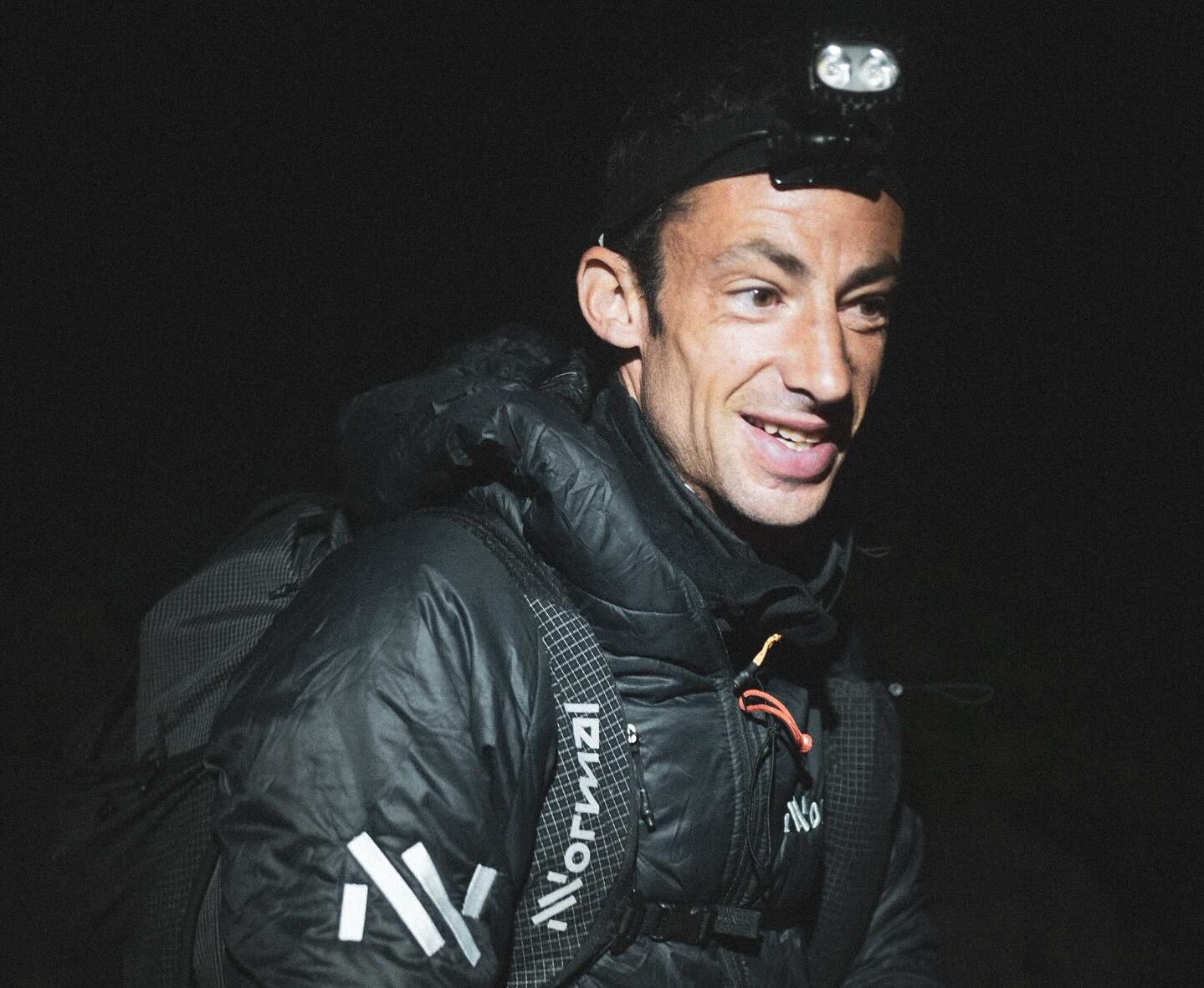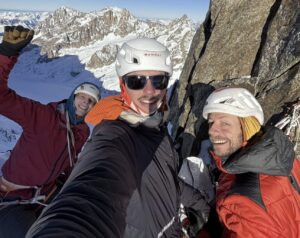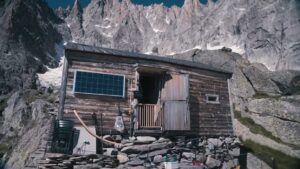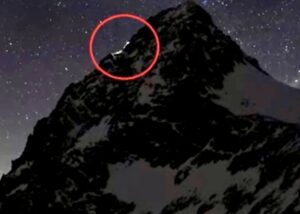A month ago, Kilian Jornet climbed all 84 of the 4,000m peaks in the Alps in 19 days. He didn’t use motorized vehicles to travel between mountains but biked, hiked, climbed, and ran. He barely slept. The wonder is not that he completed the challenge but that he survived.
Now, the Spanish athlete has ordered his memories and notes into a sort of diary about this Alpine Connections project. He named it after the WhatsApp group of friends who supported and accompanied him along parts of the journey.
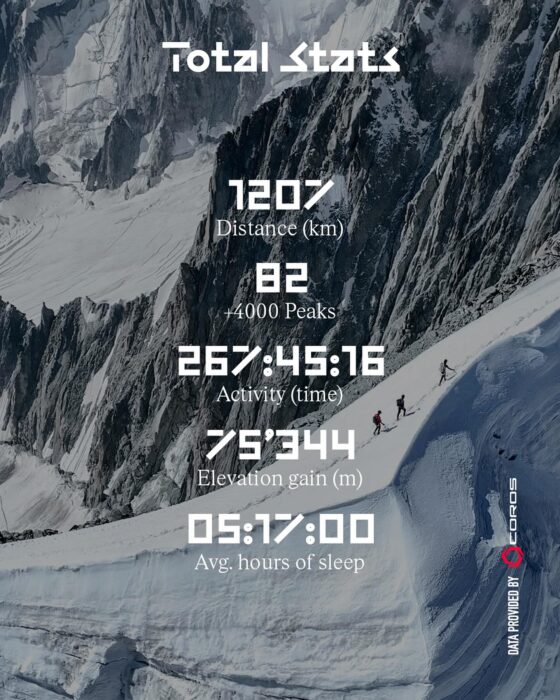
Rather than citing the numbers (they’re all on his social media and Strava anyway) or detailing the climbs, the text contains thoughts on the experiences and the lessons learned. Jornet posted the diary on the blog section of his personal website and is available in Spanish, Catalan, English, and French.
“The 4,000m peaks were just the framework; the real journey happened inside.” Jornet wrote. “It was a quest to discover who I am, my motivations, fears, and limits.”
The idea
Alpine Connections was the translation to the Alps of a previous experience: Jornet’s stunning traverse of all the 177 3,000’ers in the Pyrenees in eight days. The Pyrenees sit astride the French-Spanish border.
He planned his routes in the Alps to link as many peaks as possible on each nonstop trip. A former Chamonix resident, Jornet knows the Mont Blanc massif and Valais well. But the challenge also allowed him to climb peaks and explore massifs he was unfamiliar with, such as Bernina, Weissmies, Grand Combin, and the Bernese Alps.
For Jornet, speaking of records would “cheapen” an experience inspired by the pioneers of long alpine traverses, from Patrick Berhault to Ueli Steck. He also explains the strategy he followed and the reason for such ultra-long journeys:
The idea [was] that once I reached a mountain range, I would stay up there linking summits and not descend, moving continuously or resting in refuges or bivouacs until all the peaks were linked before moving on to another range. That was broken in Valais, where a snowstorm happened and I went to check the conditions and did the Nadelgrat and went back down to Saas-Fee before continuing the next day. I then did a four-day push to Zinal.
Connections
For Jornet, the continuous linking of peaks and ranges is one form of “connections,” but the term also references the many superfit friends who joined him for parts of the trip. Looking at the list, it’s clear that Jornet is not short of friends. They were essential to keeping him company during the link-ups and giving advice while planning the routes.
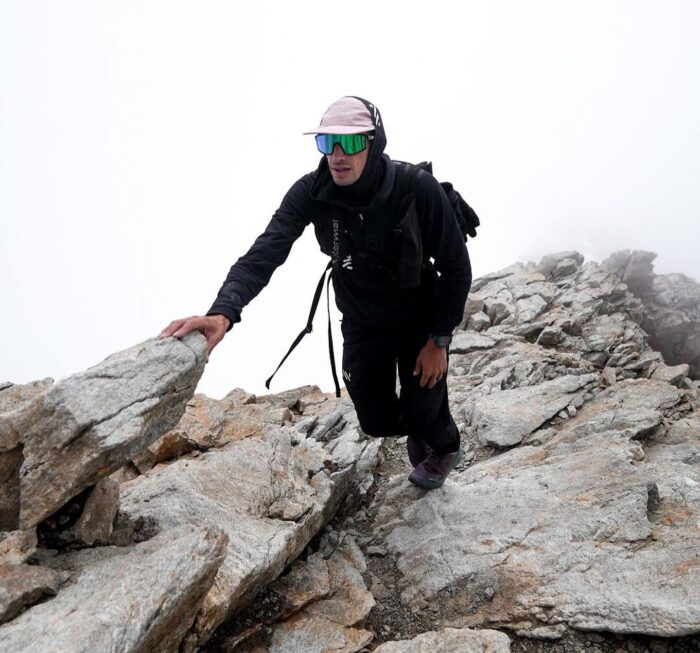
Kilian Jornet on a ridge section. Photo: @avisuals
Jornet also reflects on the physiological aspects of the performance. Amazingly, he didn’t lose weight. Overall, he was satisfied, although he did admit to some mistakes.
“Sometimes I pushed too far, accepted some risks that I consciously find unreasonable,” he said. Otherwise, he “flowed”:
On some ridges, I didn’t feel the strain. I felt a deep connection with the mountain. Effort didn’t exist anymore, time stopped, my body was one with the environment. Those are the moments I live for.
Efforts and rewards
Such moments compensated for the mental strain of never stopping, regardless of the conditions or weather. “The effort was physical, technical, but above all mental, in managing stress and emotions,” he said.

Yes, even Kilian Jornet got tired sometimes. Photo: @joelbadiavisuals
In the end, however, he did enjoy himself:
I witnessed breathtaking sunsets, full-moon nights, and crimson sunrises. I touched magnificent rocks that made me dance with them to progress. I experienced long, magnificent hours of solitude and shared laughter and ridges with friends. In the end, it’s these moments that will remain.
A whole section of the diary focuses on the gear he used during the trip, which equipment freaks will love. Finally, the diary describes each stage of a journey that is hardly repeatable but serves as a milestone for future challenges.
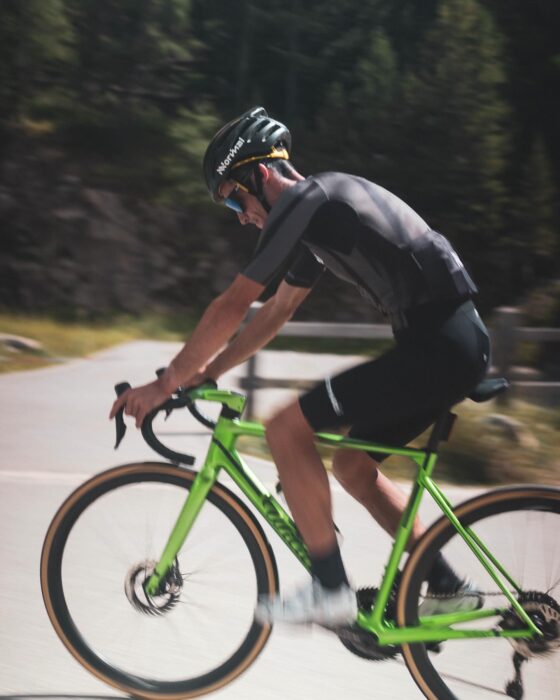
Kilian Jornet during one of the cycling stages between mountain ranges within the Alpine Arch. Photo: @nickmdanielson
